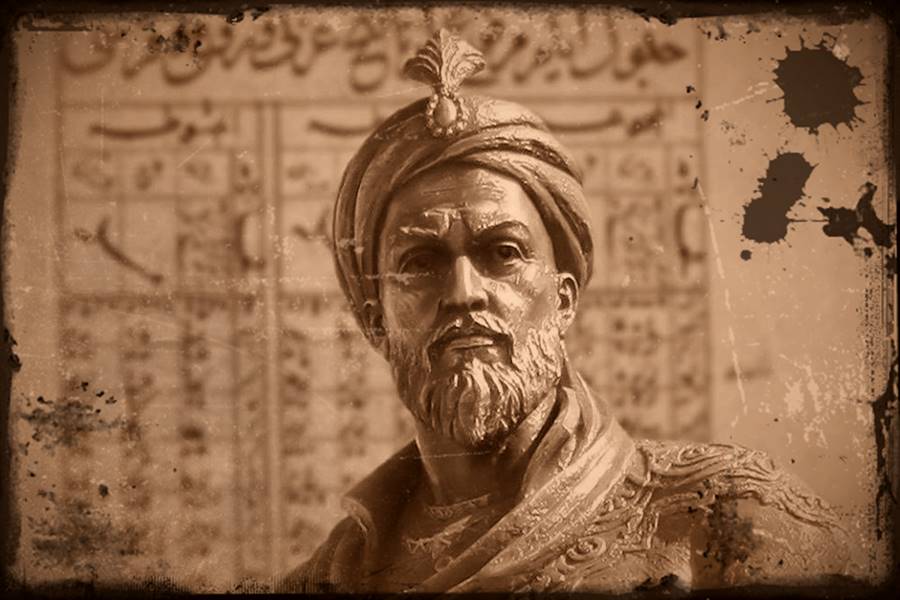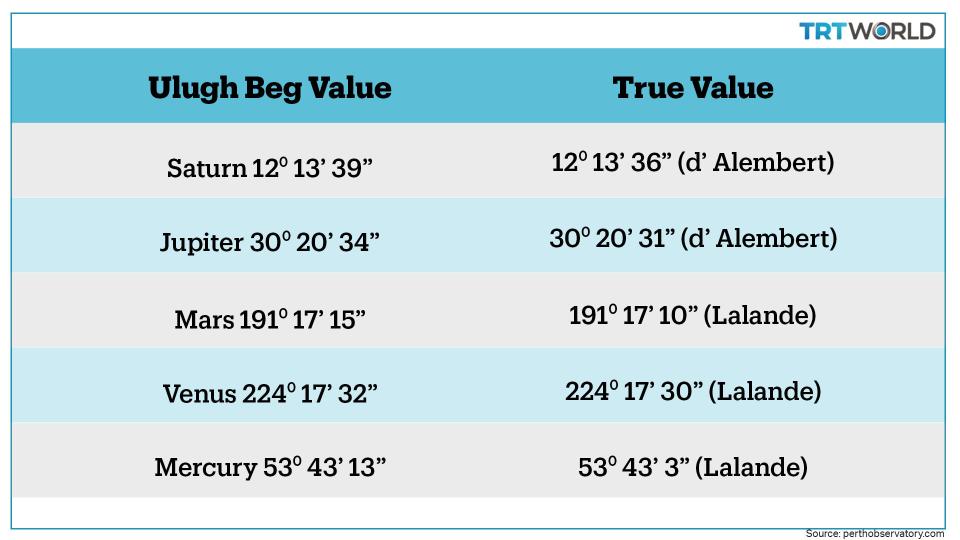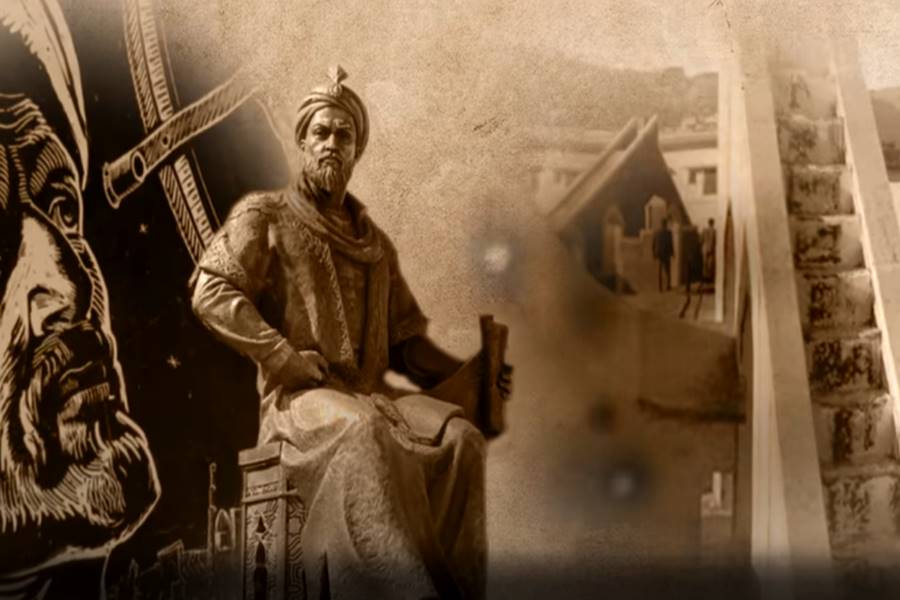Sat 08 May 2021:
Born into noble Timurid lineage, Ulugh Beg gained fame for his intellect and pioneering strides in astronomy and mathematics.
The story goes that American counterparts to Alexei Leonov — a Russian cosmonaut who became the first human to conduct a spacewalk on 18 March 1965 (then-USSR), asked a favour of him, openly expressing their desire to see Samarkand (present-day Uzbekistan) to better understand the place that shaped legendary astronomer Ulugh Beg’s life.
Ulugh Bey was born a Timurid ruler, the grandson of the legendary central Asian conqueror, Timur (known as Tamerlane in the West). When Timur learned that his son Shahrukh had had a son, he stopped his offensive on Mardin and forgave the people of the city in order to celebrate Muhammad Taraghay’s (Ulugh Bey Mirza) arrival.

Timur loved Ulugh Beg and married him off at the age of 10. When just 16, he became the Khan of Turkistan (a historical region in Central Asia). The real reason for Beg’s fame is neither due to him being Timur’s grandson, nor the impact of his reign. It is because as well as sitting on a throne, he was a scholar – a uniquely pioneering one at that.
Like the rest of the Mirzas at Timur’s palace, he had access to a top notch education. In contrast to his grandfather Timur, Ulugh Beg’s vocation and passion was in science and art.
He was a musician, philosopher, hafiz, hunter and had a talent for astronomy and mathematics.
As the Islamic calendar and prayer timings are linked to lunar movements, the first observatories started appearing in the Muslim world in the 9th century and coincided with a peaked interest for Muslims in astronomy and mathematics. There were several observatories from Qurtuba and Toledo, to Cairo and Baghdad. Up until Ulugh Beg’s reign, hundreds of astronomers and mathematicians had already been produced in the Muslim world.
The Maragha observatory was one that had impressed Ulugh Beg, however. Since Jamshid al Kashi and Qaḍi Zada al Rumi became his lecturers, Ulugh Beg’s conquests mainly focused on the sky, stars and planets, rather than on countries on earth.
During his reign, Ulugh Beg avoided war as much as he could, and spent nearly his entire wealth on art, science and cultural events.
Ahead of his time
In 1417, he founded a madressa, or religious school. Unlike others, however, the one he built in Samarkand – which still exists in the Registan Square – the subjects of mathematics and astronomy were among the most prioritised.
Three years later, in 1420, he also established his own observatory outside Samarkand on a rocky hill three stories high reaching a height of approximately 30m. It was one of the largest in the pre-modern era and was beautifully decorated with glazed tiles and marble plates.
The most remarkable instrument in Ulugh Beg’s there was the huge Fakhri sextant which boasted a radius of 40m, making it, at the time, the largest astronomical instrument in the world of that type.
The Fakhri sextant determines basic constants in astronomy: the inclination of the ecliptic to the equator, the point of the vernal equinox, the length of the tropical year, and other constants arising from observation of the sun. It was built chiefly for solar observations in general, and for those of the moon and the planets, too.
The main reason behind the sextant’s success was the accuracy it gave due to its large size. On the arc of the sextant, divisions of 70.2 cm represented one degree, while marks separated by 11.7mm corresponded to one minute, while marks spaced only 1mm apart represented five seconds. Items known to have been used in Samarkand include astrolabes, quadrants, sine and versed sine instruments, as well as an armillary sphere, a parallactic ruler, and a triquetrum.
It is known that various well-known Muslim astronomers had worked there and some of the most extensive observations of planets and fixed stars at any Islamic observatory were made here. Here are some results of a study of the yearly movements of the five bright planets known in the time of Ulugh Beg:

Thus the difference between Ulugh Beg’s data and that of modern times relating to the first four planets falls within the limits of two to five seconds. As it can be observed in the data, Ulugh Beg’s results are almost the same as those found through modern technology.
The star catalogue of Ulugh Beg in 1437 represents the only large‐scale observations of star coordinates made in the Islamic realm in the medieval period after Hipparchus. The catalogue includes more than thousand stars.
Under his leadership, observations also included the measurement of the obliquity of the ecliptic (angle between the celestial equator and the tropic of Cancer) as 23 degrees and 30’17” (the actual value at the time was 23 degrees and 30’48”) and that of the latitude of Samarkand as 39 degrees and 37’33” N. (modern value: 39 degrees and 40′).
He measured the solar year in 1437, starting with the Spring Equinox at 365 days 5 hours, 49 minutes and 15 seconds – more accurate than Copernicus would later estimate. He determined the Earth’s axial tilt as 23.52 degrees, which remains the most accurate measurement to date.
Moreover, it is believed that Ulugh Beg is linked with a Persian astronomical handbook called the Zij that stands out for the accuracy with which its tables were computed. The handbook includes four chapters based on chronology, trigonometry and spherical astronomy, planetary positions, and astrology. In mathematics, he wrote accurate trigonometric tables of sine and tangent values correct to at least eight decimal places.
He was one of the first to advocate and build permanently mounted astronomical instruments. Ulugh Beg was most certainly the most important observational astronomer of the 15th century.
That he achieved all of this two centuries before the invention of the first telescope, speaks volumes of his talent and skill. Following a publication of the Latin version of his works in London, in 1650, he became known in Europe.
A museum called The Ulugh Beg Observatory was built in 1970 in Samarkand as a commemoration, and there one can view Beg’s Star Charts and the Zij-i Sultani. These are said to be copies, with the original drawings being kept in Oxford, England.
A crater on the moon was named after him by the German astronomer Johann Heinrich von Madler on his 1830 map of the Moon, and the main-belt asteroid discovered in 1977 was named after him by Chernykh at Nauchny.





